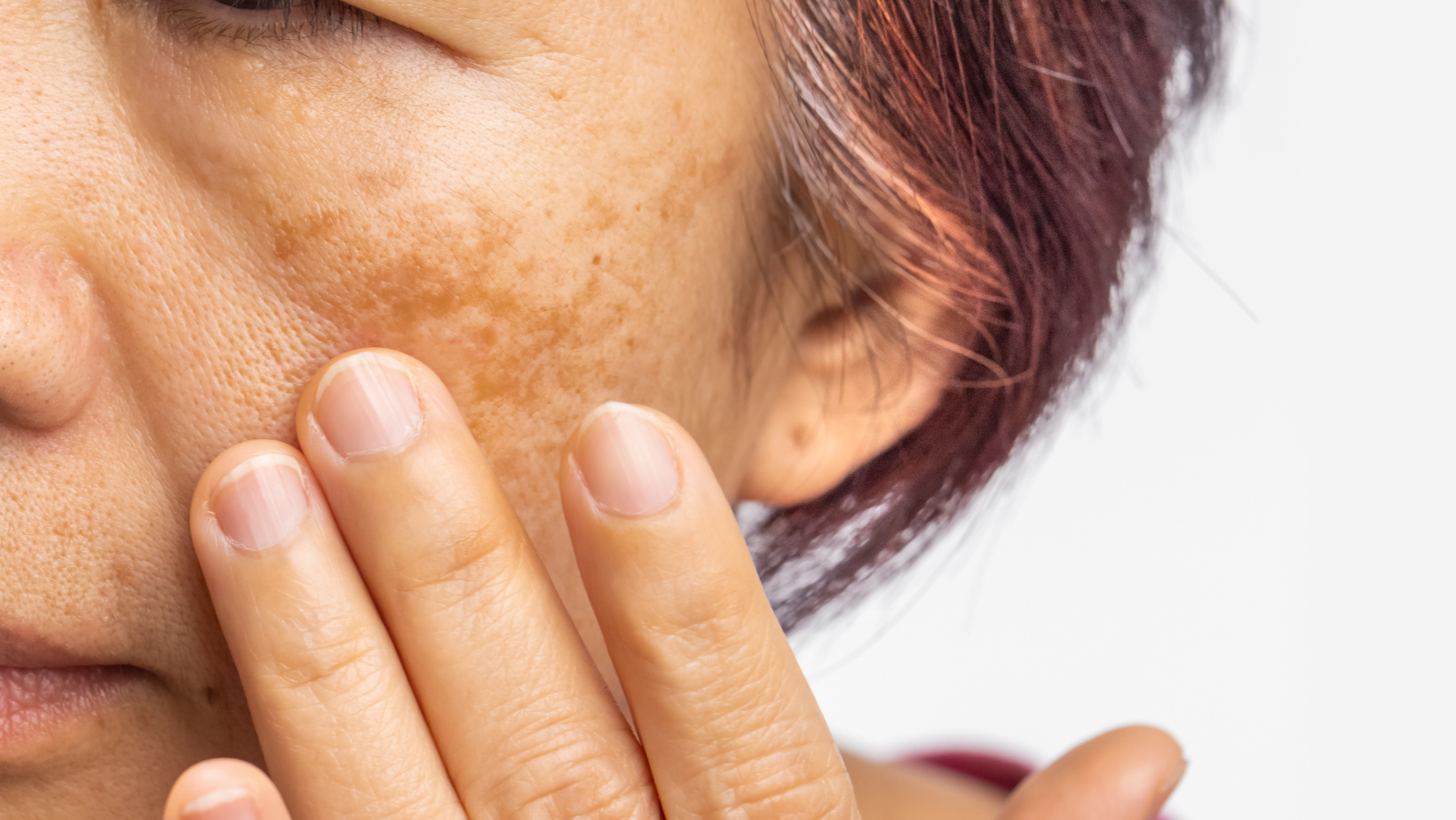Category
Melasma is a common skin condition characterized by the development of brown or greyish-brown patches on the face

Have any questions?
If you have any questions, feel free to contact us at [email protected]. A member of our support team will help you shortly.
Share this blog
Fatigue
Energy
Stress
Sleep
Melasma is a common skin condition characterized by the development of brown or greyish-brown patches on the face, particularly on the cheeks, forehead, nose, and upper lip. While melasma is generally harmless, it can affect one's appearance and often leads individuals to seek ways to manage or reduce these pigmented areas. In this article, we will delve into the causes of melasma, explore preventive measures, and discuss effective treatment options.
Hormonal fluctuations, often associated with pregnancy, birth control pills, or hormone replacement therapy, are a leading cause of melasma. Increased levels of estrogen and progesterone can stimulate the production of melanin, the pigment responsible for skin colour.
Ultraviolet (UV) rays from the sun can trigger or worsen melasma. Sun exposure stimulates melanin production, leading to the darkening of existing patches. Individuals with melasma often notice an increase in pigmentation during the summer months.
There is evidence to suggest a genetic predisposition to melasma. If someone in your family has had melasma, you may also be more likely to develop it.
Certain cosmetics or skincare products containing fragrances or harsh chemicals may contribute to melasma or exacerbate existing pigmentation. Skin irritation can stimulate melanin production.
Some cases of melasma have been associated with thyroid dysfunction. Imbalances in thyroid hormones can affect various bodily functions, including skin pigmentation.
Since sun exposure is a significant factor in melasma development, sun protection is crucial. Use a broad-spectrum sunscreen with at least SPF 30, and apply it generously to all exposed skin, even on cloudy days.
Wearing wide-brimmed hats and clothing that covers the arms and face can provide additional protection against UV rays.
If possible, avoid hormonal triggers such as oral contraceptives or hormone replacement therapy, especially if you have a history of melasma or are prone to pigmentation changes.
Choose skincare products that are gentle on the skin, free from potential irritants, and suitable for your skin type. Avoid aggressive exfoliation or harsh chemical peels that may worsen pigmentation.
Monitor your skin regularly for any changes in pigmentation or the appearance of new patches. Early detection can be vital to managing melasma effectively.
Topical treatments containing ingredients such as hydroquinone, tretinoin, corticosteroids, or a combination can be prescribed by dermatologists to lighten melasma patches. These should be used under professional guidance.
Chemical peels involve applying a chemical solution to the skin to remove the outer layer, revealing fresher, less pigmented skin. This treatment can be effective for melasma, but a qualified professional should perform it.
Laser treatments, including intense pulsed light (IPL) and fractional lasers, can target pigmented areas and break down excess melanin. A skilled practitioner should perform laser therapy and may require multiple sessions for optimal results.
Microneedling involves using tiny needles to create controlled micro-injuries in the skin, stimulating collagen production and aiding in reducing pigmentation. It can be combined with topical treatments for enhanced results.
Makeup and cosmetic camouflage can help conceal melasma patches and even skin tone. Mineral-based makeup products are often recommended for individuals with sensitive skin.
Establishing and maintaining a consistent skincare routine can contribute to overall skin health. Use products that suit your skin type and address specific concerns like hyperpigmentation.
Melasma, though challenging to manage, can be effectively addressed with a combination of preventive measures and targeted treatments. Sun protection emerges as a fundamental aspect in preventing melasma, emphasizing the importance of daily sunscreen use and protective clothing. For those already experiencing melasma, seeking professional guidance is crucial. Dermatologists can tailor treatment plans to individual needs, considering factors such as skin type, the severity of pigmentation, and potential triggers. Whether through topical treatments, laser therapy, or a combination of approaches, managing melasma requires a comprehensive and personalized strategy. Remember that results vary among individuals; consistency in sun protection and skincare practices is essential for long-term success. By understanding the causes of melasma, implementing preventive measures, and seeking appropriate treatments, individuals can take proactive steps to manage this common skin condition and promote healthier, even-toned skin.